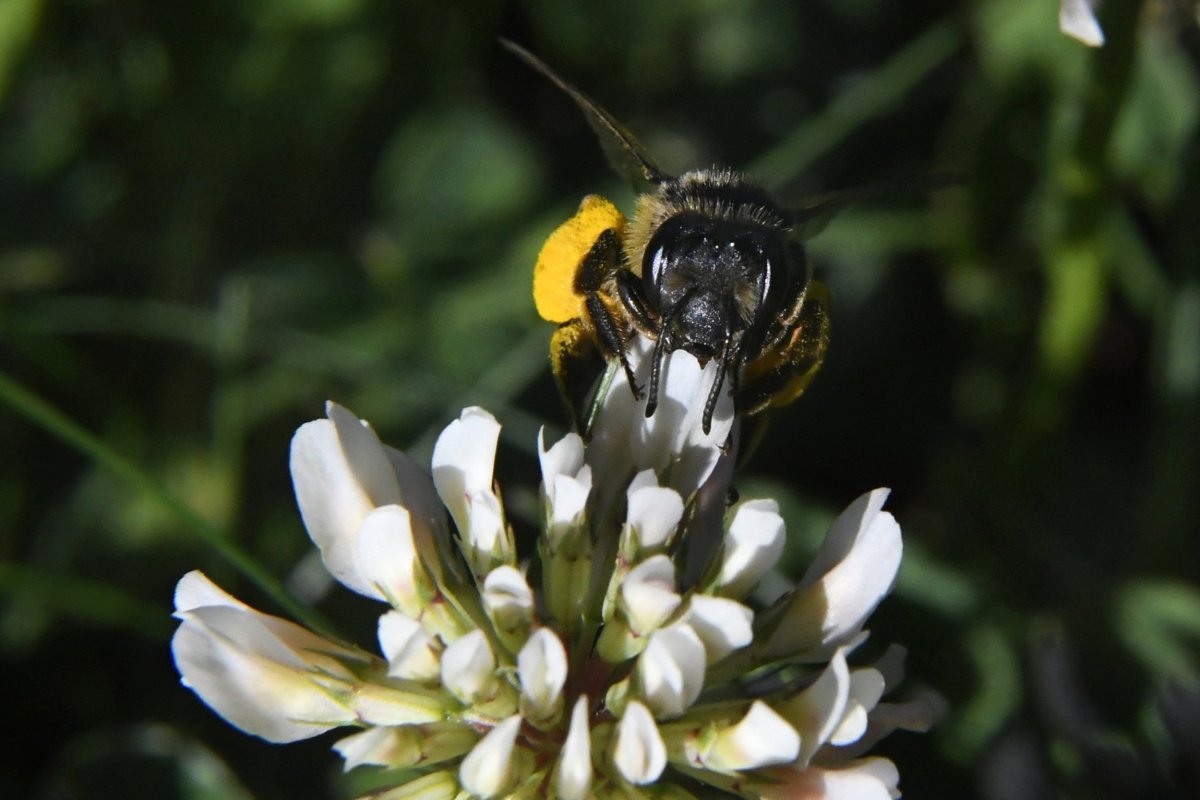Honeybees can do basic math, according to a study published in the journal Science. An international team, led by researchers from RMIT University in Australia, taught bees to associate certain colors with the concepts of addition and subtraction.
The findings are the latest demonstration of the mathematical ability of bees. The same team of researchers had previously found that honeybees were able to comprehend the mathematical concept of zero, placing them in an elite group of animals, including humans, dolphins, primates and some birds.known, to be capable of the feat,
For their study, the researchers created an experiment in which 14 bees were encouraged to fly into a Y-shaped maze where one route provided a reward of sugar water at the end, while the other contained only a bitter tasting quinine solution. When the bees worked out that it was possible to find food inside the maze, they visited it repeatedly.
At the maze's entrance, the researchers placed a sample visual stimulus consisting of between one and five shapes, which were either yellow (to represent subtraction) or blue (to represent addition).
After the bees saw the sample stimulus, they then flew into a "decision chamber" where two more visual stimuli—much like the sample—were placed at the entrances of the two possible routes. In order to choose the route with the food at the end of it, the bees had to select the "correct" answer.
"If the elements were blue, the bees would need to choose the stimulus option in the decision chamber, which was one element greater than the sample; however, if the elements were yellow, the bees would need to choose the stimulus which contained one less element than the sample number," the authors wrote in the study.
"The color of the elements, and thus the arithmetic problem to be solved, was randomly assigned per bee for each trial," in order to ensure that the bees didn't always just choose one side of the maze.
Initially, the bees made random choices, but over the course of 100 trials they learned that blue meant +1, while yellow meant -1.
The researchers found that overall, they chose the correct option in the decision chamber 60 to 75 percent of the time, leading the team to the conclusion that more animals than previously believed might be capable of numerical cognition.
"These days, we learn as children that a plus symbol means you need to add two or more quantities, while a minus symbol means you subtract," Scarlett Howard, an author of the study from RMIT, said in a statement.
"Our findings show that the complex understanding of math symbols as a language is something that many brains can probably achieve, and helps explain how many human cultures independently developed numeracy skills."
Scientists have long debated whether animals have or are capable of learning complex number skills and a distinction is often made between species that are able to discriminate between quantities (quantical discrimination) and those that can employ numerical cognition (for example, solving addition and subtraction problems).
"While many species are able to use quantical cognition to forage, make decisions and solve problems, it is debated whether any nonhuman or nonprimate animals could reach the level of numerical cognition," the authors wrote in the study. "Such a capacity would require complex management of quantities in both working memory and longer-term rule-based memory."
Previous research indicated that vervet monkeys, chimpanzees, orangutans, rhesus monkeys, African gray parrots, pigeons and even spiders could understand mathematical operations, such as addition or subtraction. Now bees can join this club as well.
The researchers say that their findings could have implications for the development of artificial intelligence.
"If math doesn't require a massive brain, there might also be new ways for us to incorporate interactions of both long-term rules and working memory into designs to improve rapid AI learning of new problems," Howard said.

Uncommon Knowledge
Newsweek is committed to challenging conventional wisdom and finding connections in the search for common ground.
Newsweek is committed to challenging conventional wisdom and finding connections in the search for common ground.
About the writer
Aristos is a Newsweek science reporter with the London, U.K., bureau. He reports on science and health topics, including; animal, ... Read more
To read how Newsweek uses AI as a newsroom tool, Click here.








